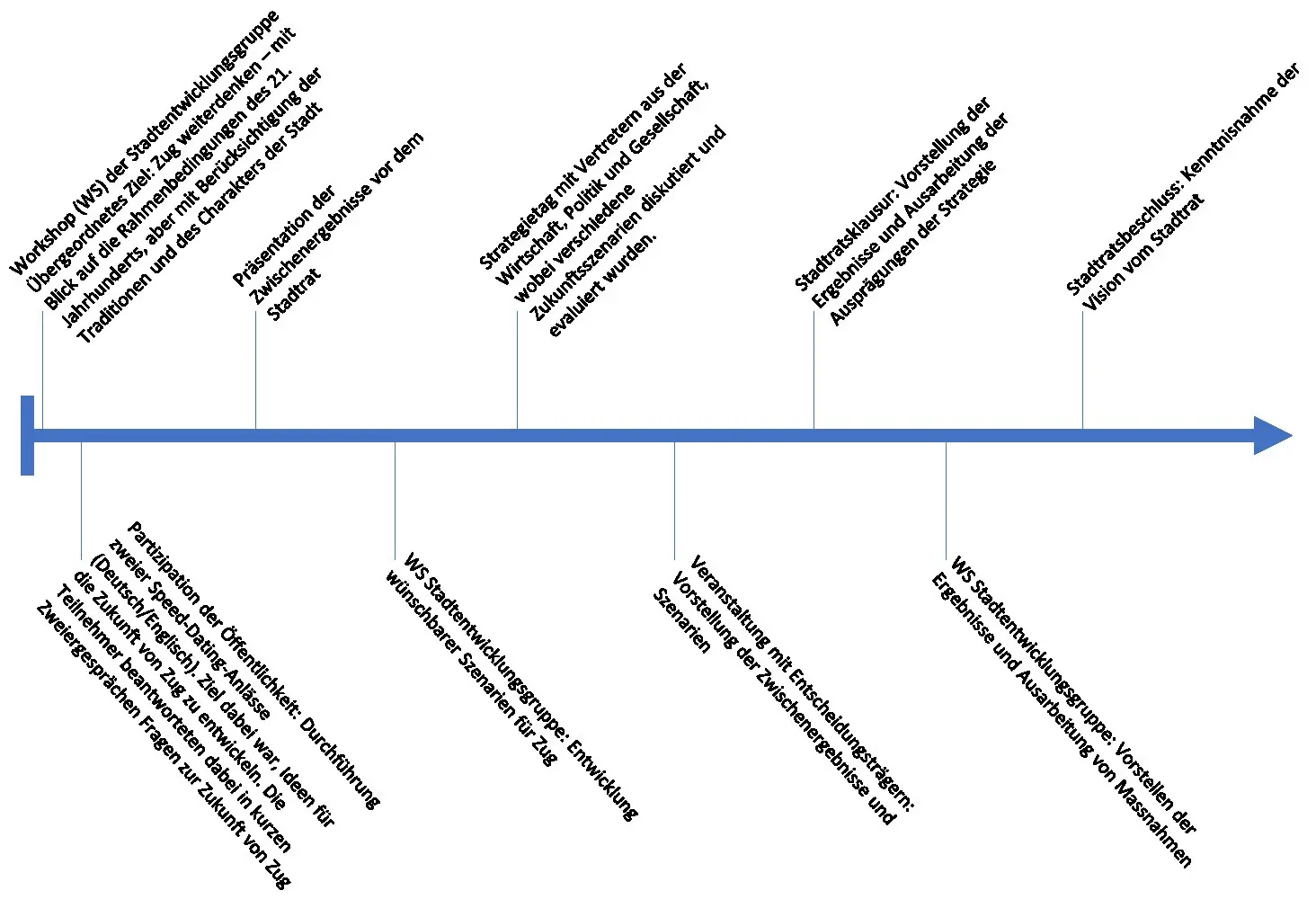Description of City Vision
Why does a city need a vision?
- Is a common vision of the different stakeholders of a city
- Serves as a tool for innovation: problems of a city can be identified based on the vision
- Assists in the selection of new solutions as a basis for decision-making (does the new solution help to achieve a goal?)
- Works independently of legislative periods and party affiliation
Smart City Visions
| Types | Zero City | Slow City | Happy City |
|---|---|---|---|
| Features | no: Waste, emissions, accidents, debts, safety risks, incidents; Targets: 100% non-fossil mobility, 2m2 of common space per m2 of private housing, citizen's income as basic income, promotion of community work, 20-hour week, sharing of means of transport & tools etc, food production in the city and surrounding area, energy production 100% in the city, circular material flows, as much as possible from production for own consumption | has less than 50,000 inhabitants, stands for quality of life, values quality, focuses on progress with people, gives significance to the relationship between city and countryside through its quality, develops valuable natural areas, supports biodiversity, cultivates tradition and stands for innovation promotes regional products and their short supply routes is a city or community with social cohesion is sustainable for future generations is a means against poverty | happy inhabitants, puts the inhabitants of a city in the centre, promotes social togetherness, development of green spaces & bicycle paths, shortening of working distances |
| Examples | Hamburg (Nexthamburg), DE | Mendrisio, CH, Orvieto, IT | Happy Streets Living Lab Vancouver |
| Sources | - | www.cittaslow.de | happycities.com/projects/happy-streets-living-lab |
